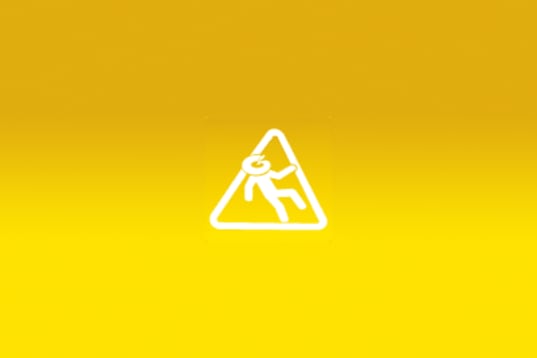If you really want to take your IM training to the next level, sign up for one of our advanced certifications. The purpose of this training is to advance the clinical application of Interactive Metronome® within a specific field be it pediatrics, adult or fall risk reduction. Participants will be guided through tools and techniques to help analyze and build their current and future applications of Interactive Metronome® techniques.
Advance Certification for Pediatrics

This online certification course has been designed to provide greater access to Interactive Metronome® Pediatric Certifications for providers who may be unable to attend a live workshop. Participants will be guided through tools and techniques to help analyze and build their current and future applications of Interactive Metronome® techniques within the diverse field of pediatrics. Successful course completion leads to the Interactive Metronome® Advanced Pediatric Certifications. Optimal treatment outcomes are more easily attained when there are appropriate accommodations and modifications to account for age, developmental level, group dynamics and environmental factors.
Certification & Coaching: IM Pediatric Best Practices
* You Must Be IM Certified To Take This Course
This online certification course has been designed to provide greater access to Interactive Metronome Pediatric Best Practice Certification for providers who may be unable to attend a live workshop. Participants will be guided through tools and techniques to help analyze and build their current and future applications of Interactive Metronome techniques within the diverse field of pediatrics. Successful course completion leads to the Interactive Metronome Advanced Pediatric Designation (IMAP). Optimal treatment outcomes are more easily attained when there are appropriate accommodations and modifications to account for age, developmental level, group dynamics and environmental factors. The purpose of this training is to advance the clinical application of Interactive Metronome within the field of pediatric practice. This course will cover individualized clinical application of IM systems from infancy through age 18. Participants will learn the skills necessary to adapt to the often fluctuating clinical and educational presentations of the client with innovative treatment approaches that are engaging and motivating to the pediatric client. Course participants should have completed basic IM certification & have access to the IM equipment in order to undertake this intermediate-level training.
CEUs
1.4 AOTA; 17.5 NBCOT PDUs (14 Contact Hours)
1.4 ASHA (14 Contact Hours)PT/PTA & Other Disciplines Not Listed Above: If your discipline or state is not listed above, you may submit paperwork to your state board or association for CEUs if they allow you to do so. Please check with your state board/association prior to registering for this course.
Course Type
On Demand Webinar
Price
$175
Advance Certification for Adult Rehab

Learn how to individualize clinical application of the IM from 18 through the geriatric age range. Participants will learn the skills necessary to adapt to often fluctuating clinical presentations with individualized treatment approaches that are engaging and motivating to the adult patient. We also take into consideration that the IM will be used at the inpatient bedside, the therapy gym or at home assisted by a caregiver. We’ll show you how the IM is the most adaptable tool you’ll carry in your therapy tool kit.
IM Adult Rehabilitation Best Practices: Motor Skills
* You Must Be IM Certified To Take This Course
Interactive Metronome (IM) is a performance-based feedback system that was initially developed as a tool to facilitate learning, sensory processing and attention in children. Early on, researchers and clinicians realized the potential of IM to also facilitate learning and neuro-muscular control in adults, especially for patients suffering from neurological conditions. The “Golf Study” performed by Terry M. Libkuman and Hajime Otani was the first study performed on adults which showed that IM was appropriate for this age group and possibly for persons suffering from orthopedic conditions. This study showed that IM improved the shot accuracy of golfers up to 35% by improving core skills. The case of Brenda Canup is a prime example of IM’s potential place in orthopedic rehabilitation. Mrs. Canup opted for a below-the-knee amputation after struggling with a foot deformity all of her life. After surgery, she became frustrated with her lack of progress and was still ambulating with a walker. Later in her treatment, after she’d lost virtually all hope of ever ambulating with her new prosthetic limb, she started the IM program and was finally ably to make a full recovery and run the Disney Marathon. After further reports of good treatment outcomes with IM in this age group, clinician’s began to incorporate IM more and more into treatment of the adult ortho and neuro patient. IM is now a standard of care in many adult outpatient clinics, rehabilitation hospitals, nursing homes, assisted living centers, home health agencies and acute hospital settings. Until now clinicians have adapted IM technology for adult patients based upon knowledge, research and evidence- based practices employed in the pediatric populations. It has therefore become clear that there is a need in the Interactive Metronome (IM) community to develop “Best Practice Guidelines” to provide the clinician with proven techniques that will enhance their clinical practice and understanding of the Interactive Metronome as a tool for adult orthopedic and neurological rehabilitation. This course is designed to provide the certified IM provider with advanced practice guidelines and techniques for the adult patient based upon sound clinical evidence and the skills of advanced IM practitioners. The material for this manual is therefore provided.
CEUs
0.4 AOTA; 5 NBCOT PDUs (4.0 contact hours)
PT/PTA & Other Disciplines Not Listed Above: If your discipline or state is not listed above, you may submit paperwork to your state board or association for CEUs if they allow you to do so. Please check with your state board/association prior to registering for this course.
Course Type
Self Study
Price
$150
IM Adult Rehabilitation Best Practices: Cognitive Skills
* You Must Be IM Certified To Take This Course
Although adolescent/adult patients benefit greatly from auditory and auditory-visual IM, some continue to demonstrate deficits in visual processing, attention, and executive functions. This was the observation of a Speech-Language Pathologist (SLP) at a Level II Trauma hospital in St. Petersburg, Florida. In order to help these patients achieve further recovery, she developed several IM best practices that proved to be extremely beneficial to her patients. Spurred on by the treatment outcomes achieved by this SLP, other clinicians in her field developed and implemented additional best practices for the treatment of language processing and executive functions. Across the U.S. in Arizona, another SLP reported integrating treatment tasks for Aphasia and Apraxia of Speech with IM, improving treatment outcomes for communication and language. This clinician has since developed best practices for using IM in skilled nursing facilities and with patients who suffer from dementia. This course contains helpful assessment and treatment strategies for the treatment of cognitive-communicative deficits in neurologically impaired adolescents/adults. Where applicable, specific treatment tasks, stimuli, and hierarchy are described in detail.
CEUs
0.45 AOTA; 5.625 NBCOT PDUs (4.5 Contact Hours)
0.45 ASHA (4.5 Contact Hours)Other Disciplines Not Listed Above: If your discipline or state is not listed above, you may submit paperwork to your state board or association for CEUs if they allow you to do so. Please check with your state board/association prior to registering for this course.
Course Type
Self Study
Price
$75
Advance Certification for Fall Risk Reduction

All professionals working in medical/hospital, rehabilitation, skill nursing, assisted-living, and home health settings recognize the important role they each play in preventing falls. Assessing fall risk, modifying the environment for increased safety, patient/caregiver education/training and rehabilitation all contribute to fall prevention. Despite all of the emphasis and effort placed upon fall prevention, it remains a costly problem for most institutions and for patients who suffer from the debilitating effect of falls. This program is designed to educate and certify participants in Interactive Metronome’s® Fall Risk Reduction Program.
Fall Risk Reduction Coaching & Certification Program
* You Must Be IM Certified To Take This Course
All professionals working in medical/hospital, rehabilitation, skill nursing, assisted living, and home health settings recognize the important role they each play in preventing falls. Assessing fall risk, modifying the environment for increased safety, patient/caregiver education/training, and rehabilitation all contribute to fall prevention. Despite all of the emphasis and effort placed upon fall prevention, it remains a costly problem for most institutions and for patients who suffer from the debilitating effect of falls. This program is designed to educate and certify participants in Interactive Metronome’s Fall Risk Reduction Program. This six-webinar on-demand series focuses on incorporating Interactive Metronome (IM) into the treatment plan with various patient populations at risk for falling while emphasizing two often-overlooked features of fall prevention: 1) that each professional who encounters the patient is responsible for identifying fall risk and intervening to prevent falls, and 2) how timing in the brain (or temporal processing) is at the heart of fall risk and prevention, including its effect on several systems: musculoskeletal, proprioceptive, oculomotor, vestibular, cognitive and communicative. The IM Fall Risk Reduction Coaching & Certification Program teaches clinicians how to use Interactive Metronome to improve balance, focus, and ability to have divided attention during movement. Gait was once thought to be an automatic activity, requiring very minimal executive function resources. Research now shows that gait requires some level of attentional or executive function resources. Patients that demonstrate decreased ability to maintain normal gait while performing a cognitive task have been shown to be at a higher risk for falls. The Fall Risk Reduction Coaching & Certification Program addresses patients’ needs in a multi-system, dual-tasking mode to achieve treatment outcomes directly related to decreasing the risk of falling. Upon successful completion of the course, participants will be certified in the IM Fall Risk Reduction Protocol and will be able to immediately apply the principles learned in this course to design & implement discipline-specific treatment plans that effectively decrease the risk of falling.
CEUs
0.6 AOTA; 7.50 NBCOT PDUs (6.0 Contact Hours)
PT/PTA & Other Disciplines Not Listed Above: If your discipline or state is not listed above, you may submit paperwork to your state board or association for CEUs if they allow you to do so. Please check with your state board/association prior to registering for this course.
Course Type
On Demand Webinar
Price
$175
